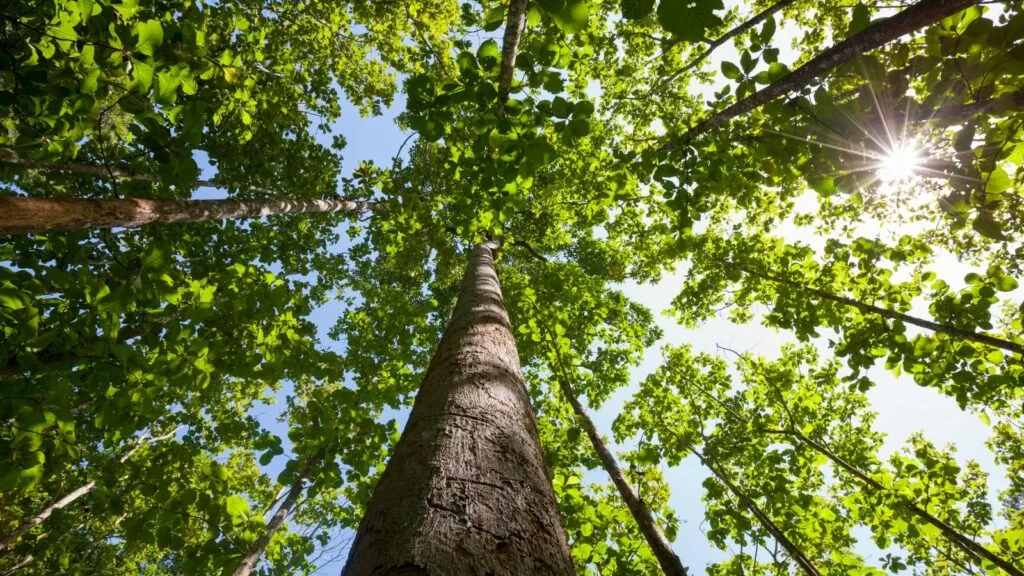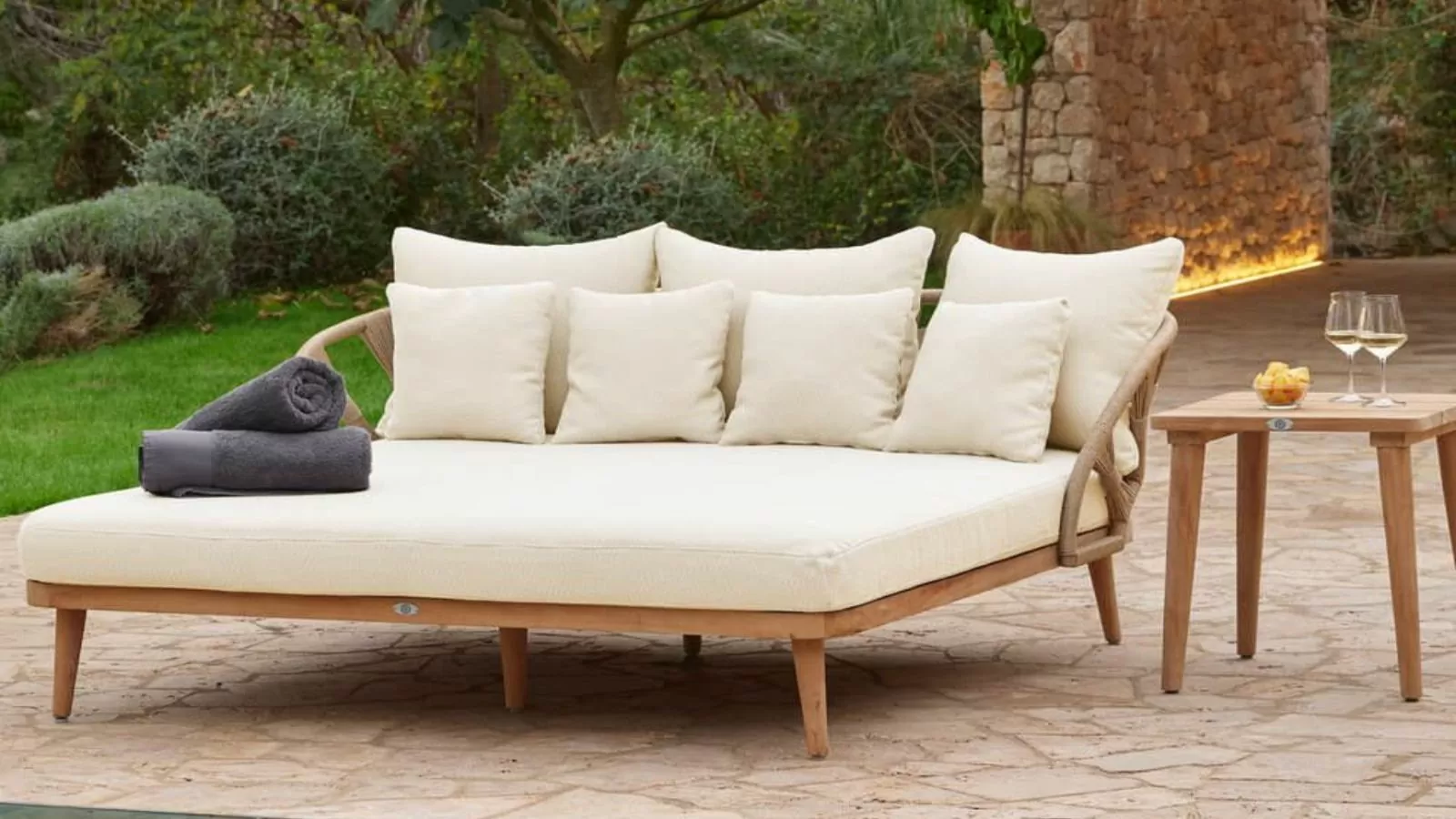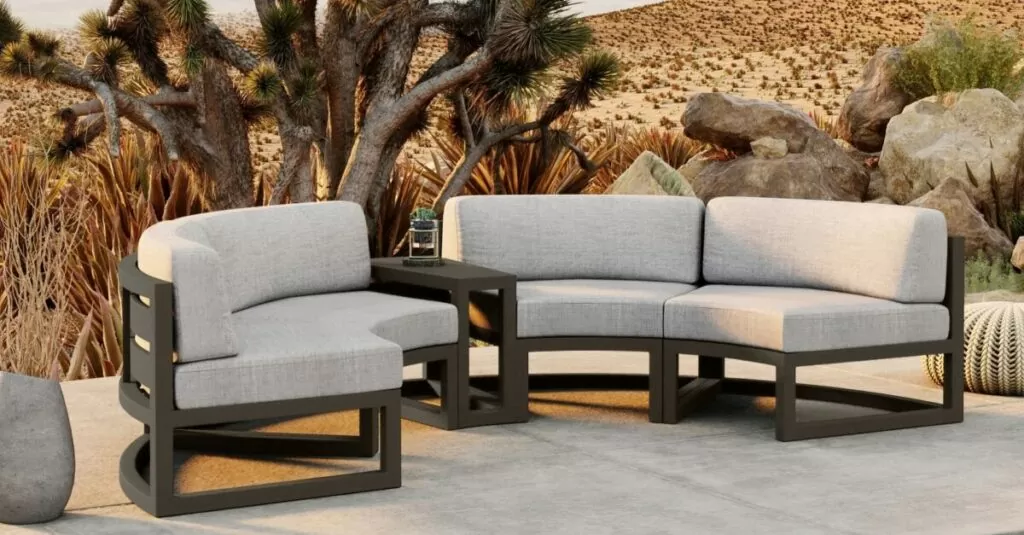I’m not gonna to lie. I like to have my cake and eat it, too. (Don’t we all?) So, naturally, I find myself looking at these beautiful, Pinterest-worthy, timeless teak outdoor furniture pieces which claim to be eco-friendly and sustainable, and I have to ask a few important questions. Is it really this beautiful AND sustainably sourced? Has the teak furniture industry established the practices and policies that protect our planet as well as the local working communities?
Customers have asked me these same questions. So today, grab a shovel because we’re digging deep to find some answers.
But first, maybe a little context is helpful. This sturdy species (scientifically named Tectona grandis) is only natively found in the forests of Southeast Asia. Think Myanmar, Indonesia, and India. Teak’s dense grain and high natural oil content make it remarkably resistant extreme weather, pests, and rot (which is why it’s so amazing for long-lasting outdoor furniture). So, is it beautiful? Yes. Is it durable? Undoubtedly.
Here’s the million-dollar question, though: how sustainable is this golden child of the wood furniture world? The answer, my friends, is a delicate balance between responsible forestry practices, the harsh realities of illegal logging, and the intricacies of modern furniture maintenance. Did you get that shovel ready? Because here we go.
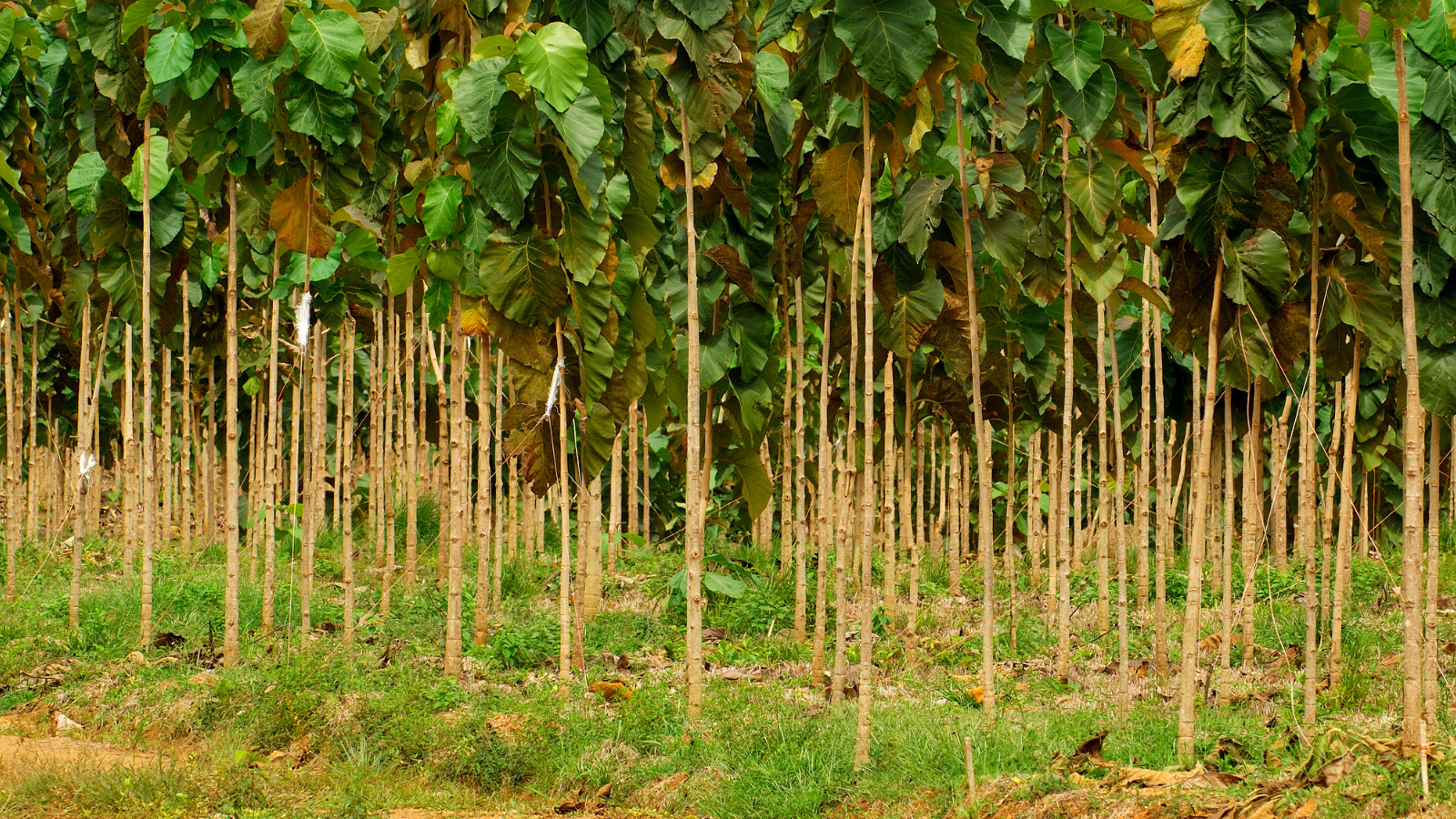
The Sustainability Pedigree of Plantation Teak
Imagine rows upon beautiful rows of lush teak trees thriving under a warm tropical sun, deep taproots anchoring them to nutrient-rich soil. This postcard-perfect scene represents the growing trend of sustainable teak plantations across Asia and beyond. Unlike traditional deforestation, these meticulously-managed farms are designed to cultivate a steady supply of teak without depleting natural forests.
Here’s the essence of it. Mature teak trees, typically 40-60 years old, are selectively harvested while new saplings are planted in their place. It’s a (non-Disney) circle of life situation, ensuring a continuous cycle of growth and replenishment. This aligns with renewable forestry principles, responsibly utilizing teak trees without jeopardizing its future availability.
Additionally, many teak plantations embrace emerging agroforestry techniques, where farmers grow complementary crops (coffee, spices, etc) between the teak rows. This not only boosts economic opportunities for local communities but also promotes biodiversity within the plantations themselves. It’s a win-win for the environment, the local growers, and the economies of the surrounding communities.
This is one giant green check-mark firmly in favor of teak’s sustainability.
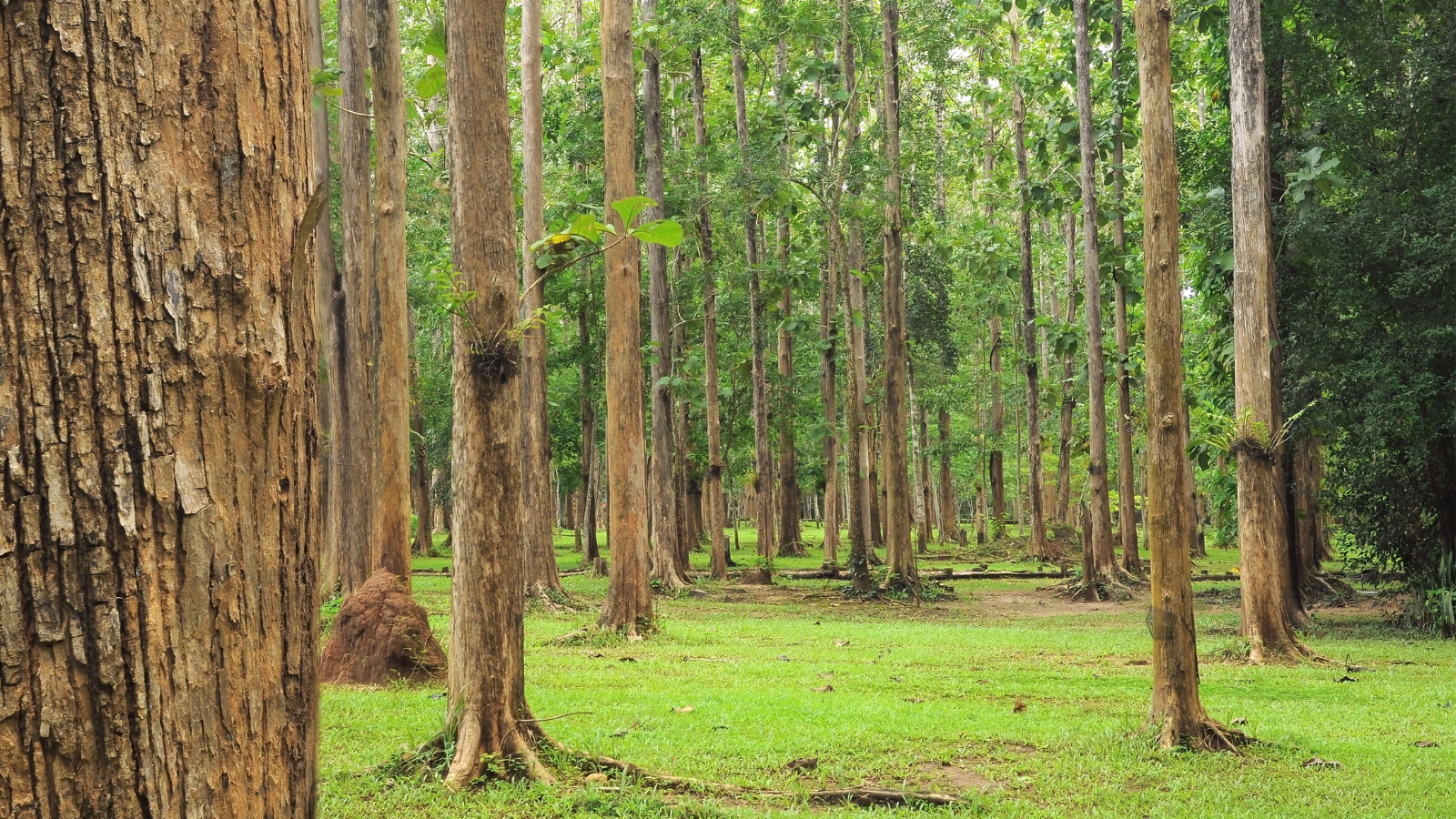
Now, there is an elephant in the room: carbon footprint.
Quynh Nguyen, author at Impactful Ninja, wrote the following.
“It’s important to note that not all teak production is inherently sustainable. The environmental impact of teak furniture also depends on how it’s transported and processed. Fr instance, transporting teak from places like Southeast Asia to the US can increase its carbon footprint.”
While sustainable teak production itself is relatively low-impact, the transportation of this heavy hardwood across vast overland and oversea distances can rack up some serious emissions. The reality is that everything has a carbon footprint, and our goal should be minimizing our footprint where possible.
One reason I’m proud of our Patio Productions team is we annually donate to CarbonFund, an organization that partners with planet-conscious organizations to enhance their sustainability impact.
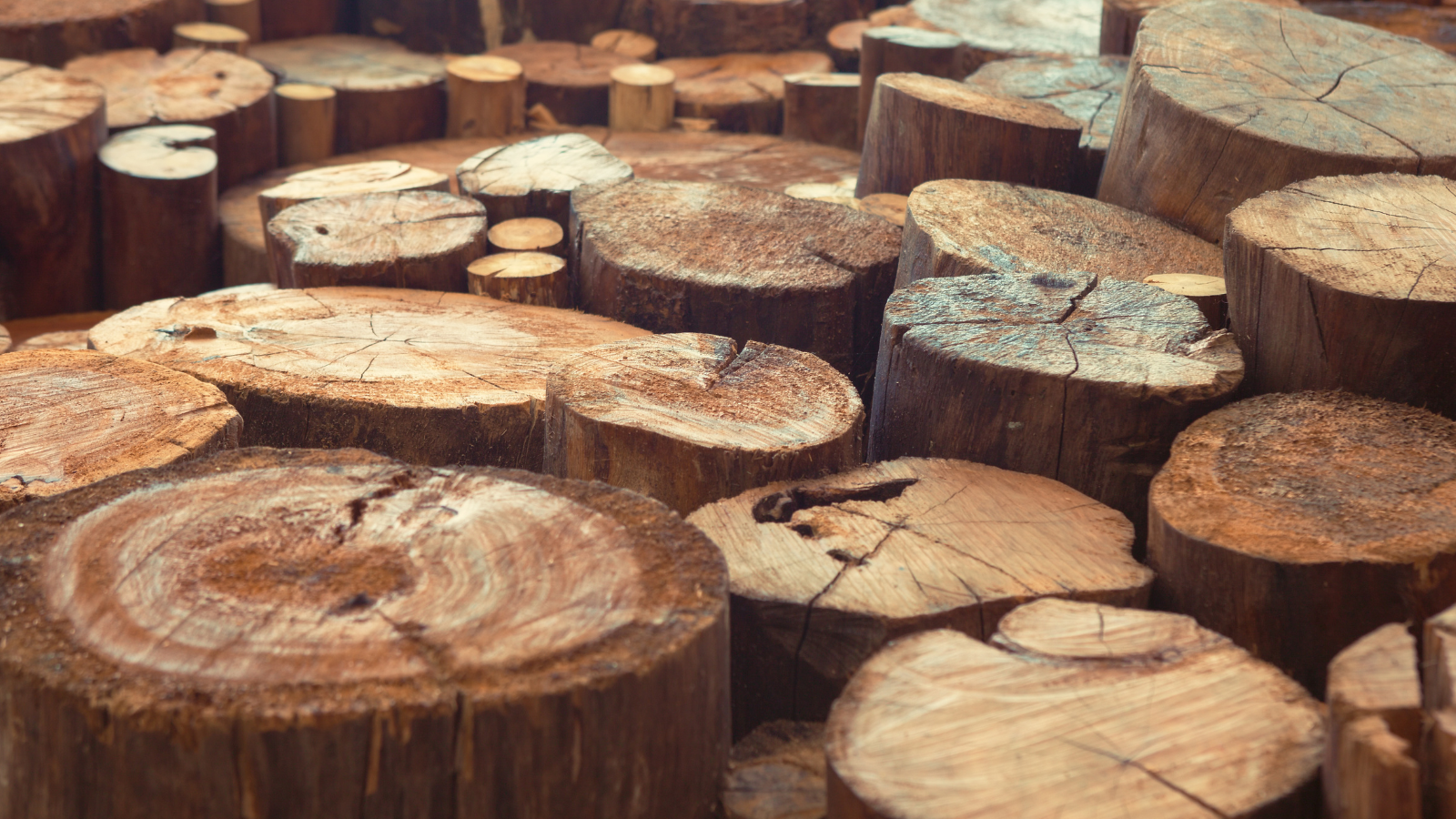
The Harsh Reality of Illegal Teak Logging
As much as I’d love to focus solely on the sustainability of teak plantations, there’s a darker side to this story that we can’t ignore. Illegal logging, particularly in Myanmar’s ancient teak forests, has become a devastating environmental scourge, putting entire ecosystems at risk.
Let me paint a sad word-picture for you. Rugged loggers, without respect for local laws or sustainability practices, hack away at centuries-old teak giants, leaving a trail of destruction in their wake. These shady operations not only decimate the teak population ,but also wreak havoc on the delicate web of biodiversity that thrives in these tropical rainforests. From rare flora to endangered fauna, the ripple effects of illegal teak logging can be catastrophic.
Unfortunately, my sad story keeps going. This illicit trade often fuels corruption, human rights violations, and even armed conflicts in regions where teak is a valuable commodity. I guess no industry can honestly say it’s completely free of violence and destruction.
So, what do we do? For starters, consumers need to be vigilant about the sources of our teak products. Look for reputable suppliers that can provide documentation proving their teak is sourced from sustainable, certified plantations or responsible forest management programs. Organizations like the Forest Stewardship Council (FSC) and the Programme for the Endorsement of Forest Certification (PEFC) are your trusty allies in this quest for ethical teak.

The Planet-Friendly Perks of Teak Patio Furniture
Now that we’ve wrestled through the sustainability conundrum, let’s explore some of the inherent eco-advantages of teak patio furniture that make it a smart choice for the environmentally conscious homeowner.
Teak’s legendary durability means your outdoor furnishings can withstand the elements for decades, reducing the need for frequent replacements and minimizing waste. I’m talking about heirloom-quality pieces that can be passed down through generations! Imagine the carbon footprint savings from not having to constantly manufacture and ship new furniture sets.
Teak’s natural resistance to pests and decay means you can kiss those harsh chemical treatments goodbye. No more worrying about toxic run-off or harmful fumes – just good ol’ fashioned, all-natural teak keeping your patio looking fresh. Healthy for you; healthy for the planet!
Teak is also incredibly low-maintenance, requiring minimal cleaning and zero staining or sealing. This not only saves you time and effort but also reduces the use of potentially harmful cleaning products that could end up polluting our waterways.
And let’s not forget about teak’s inherent beauty! With its warm, golden hues and distinctive grain patterns, teak patio furniture adds a touch of natural elegance to any outdoor space. Who needs synthetic materials when you can bring the stunning charm of real wood into your backyard oasis?
The Journey of a Teak Patio Set
Let’s take a little journey and explore the lifecycle of a teak patio set. From seedling to heirloom.
It all starts on a responsibly managed teak plantation, where saplings are carefully nurtured and tended for decades until they reach maturity. Once harvested, the logs are transported to a manufacturing facility, where skilled artisans transform the raw teak into beautiful outdoor furniture.
Throughout this process, wood waste is repurposed into biomass pellets or other byproducts, minimizing the environmental impact. The finished teak patio set then makes its way to a showroom like ours, where eco-conscious customers (that’s you) can appreciate its timeless beauty and sustainable origins. The only tough part at that point is which beautiful set of teak to take home!
That’s not even the end of our journey! With proper care and maintenance (which, let’s be real, is minimal with teak), your patio furniture can last for generations, avoiding the landfill and reducing the demand for new resources. And when the time finally comes to part ways with your beloved teak set, it can be recycled or repurposed into new products. You should totally check out reclaimed teak furniture. It’s next-level beautiful.
Eco-Friendly Teak Patio Furniture Maintenance
I’ve mentioned it before, but often the best way to maintain the beauty of high-quality, Grade A teak furniture is to ditch harsh chemicals, cleaners, or stains. For these types of furniture, mild soap and water keeps it healthy and like-new.
Our team has already written a much more detailed and expansive set of instructions and guidelines for maintaining teak patio furniture. But if you’re more of a cliffs notes person, here are the highlights:
- Cleaning Teak Furniture: Use a brush and mild dish soap, with a splash of vinegar for stubborn grime; scrub with the grain. Avoid metal brushes or steel wool to prevent scratching the wood’s finish. Rinse off soap residue with a clean cloth or hose, but avoid pressure washing.
- Removing Stains from Teak Furniture: Lightly sand heavy stains with fine-grit sandpaper. Use a clothing iron to remove water stains. Apply a commercial grade teak cleaner for grease stains and brush with a soft pad.
- Teak Furniture Protection: Avoid using teak oil on outdoor furniture; it leads to mildew and doesn’t prevent graying. Use teak sealers to lock in natural oils and protect against sunlight and mold. Apply sealer and clear coat for long-lasting protection and sheen.
- What Not to Use on Teak Furniture: Avoid teak oil, varnish, water repellents/sealers, and pressure washing. Don’t use steel or brass wool; opt for soft cleaning pads instead.
- Teak Furniture Care and Winter Protection: Store indoors during winter or use furniture covers with breathable air vents. Keep away from damp and shaded areas to prevent mold and mildew. Clean immediately if black mildew spots appear.
Teak’s natural aging process is a thing of beauty! As it’s exposed to the elements, teak furniture will gradually develop a gorgeous silvery-gray patina, adding character and charm without compromising its structural integrity. You don’t need to constantly stain or seal the wood, as this can actually trap moisture and lead to premature deterioration.

Having AND Eating Our Beautiful-and-Sustainable Teak Cake? Yes!
With responsible sourcing, ethical practices, and healthy maintenance, teak patio furniture can indeed be a sustainable and eco-friendly choice for the conscientious homeowner. Yay!
By supporting certified plantations and prioritizing your teak furniture’s longevity and low-maintenance, you can enjoy the timeless beauty of this tropical hardwood without sacrificing your environmental values. It’s a delicate balance, but one that’s achievable with mindful consumption and a commitment to preserving our planet’s natural resources.
At the end of the day, the choice is yours, amigos. As for me and the team at Patio Productions, we’re firmly committed to offering eco-conscious teak options that allow you to create your dream outdoor relaxation spot without compromising our planet.
So, what do you say? Let’s raise a glass of refreshing iced tea (organic, regeneratively-produced, of course) to the possibilities of eco-friendly outdoor living and the timeless appeal of teak patio furniture done right. Here’s to many more years of backyard bliss, all while treading lightly on our beloved Mother Earth.
Stay sunny, stay sustainable, and keep that patio party going strong!

Eben Jol is a creative media specialist with over 9 years of experience creating helpful content for outdoor brands. In that time he has learned the ins and outs of the outdoor industry and has a keen understanding of what topics customers and information seekers need to know when they are planning and furnishing their outdoor space. He has gathered data and reported on industry insights for organizations such as the ICFA, and in his spare time, loves relaxing in his own backyard (and the great outdoors at large) with his wife and 3 kids.

